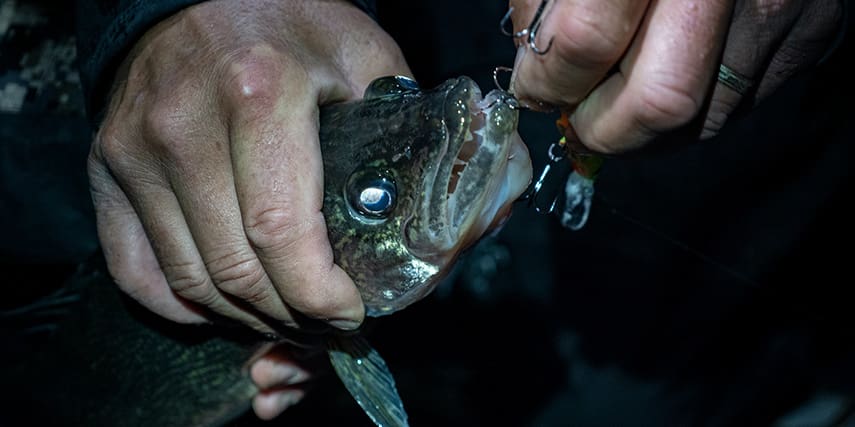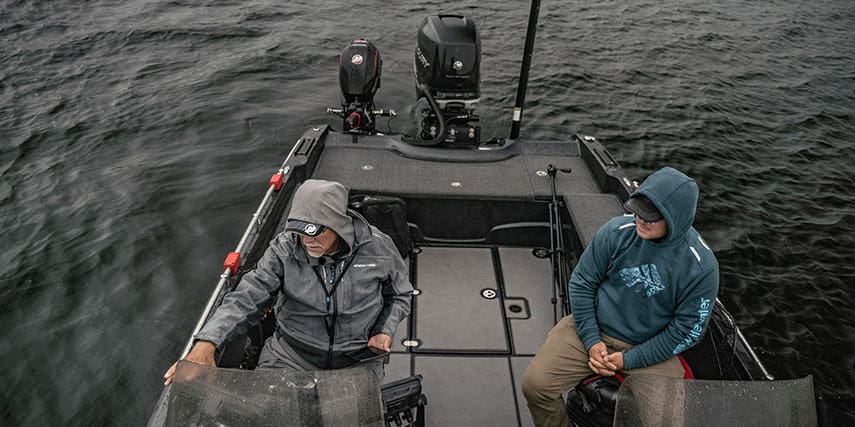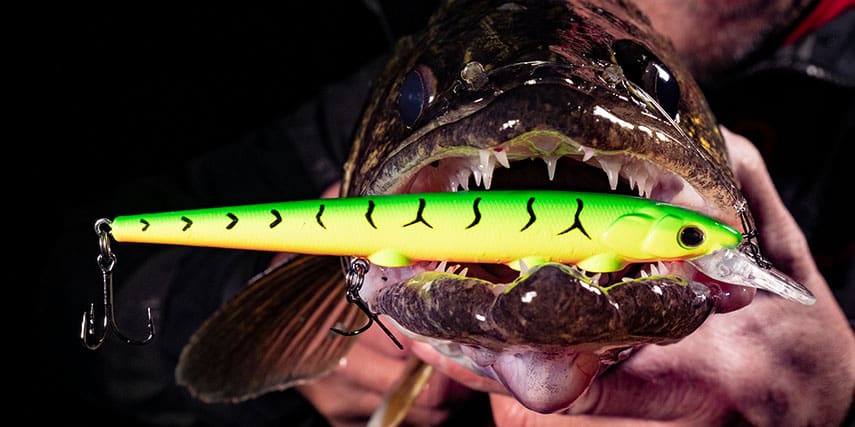Whitewater Fishing pro and veteran walleye tournament champ, Gary Parsons, talks long-line trolling tactics for more walleyes this fall.
Although it can be a struggle to choose between field, deerstand, and boat during fall, we encourage you to spend a little time chasing walleyes. Fall ‘eyes do put on the feedbag, and it can be one of the best times of year to boat both numbers and good-sized fish… especially at night, as we’ll soon learn.
So, what are the best walleye tactics to employ come autumn? We talked with Whitewater pro, Next Bite TV host, and former walleye tournament champion, Gary Parsons, to answer that very question.
“Especially during October, trolling rocky shorelines at night can be a really fun way to fish,” says Parsons. “I started doing it years and years ago before most people even realized there were big walleyes in Green Bay. I also used to troll the shorelines of Lake Superior’s Sturgeon Bay—and the Little Sturgeon Bay stretch, too.”
Parsons says he wouldn’t even start fishing until 10 pm, quitting only when the sun lifted over the horizon.

“It was simply incredible how many big fish we caught. And that was really the foundation of my career, because at the time it was difficult to get photos of 8 to 12 pound walleyes during the day. We took a lot of photos that ran everywhere, and everybody’s minds were blown,” recalls Parsons.
He says The Next Bite partner and fellow tournament angler Keith Kevajecz soon joined him on the nocturnal walleye trolling runs.
“Keith would drive all the way from Rochester and we’d fish the entire night and it was an absolute blast. To this day, it’s still super productive if you’re willing to forego sleep,” says Parsons.
Parsons confides that it works on a lot of other bodies of waters, too, especially those that are highly pressured during the day, have ultra-clear, invasive-filled waters, or many lakes overlooked by walleye anglers. Most recently, Parsons and company shot a great show illustrating the efficacy of the technique on Wisconsin’s Madison Lake Chain.
How to Walleye Troll at Night During Fall
“You don’t need boards, leadcore, any of that,” says Parsons. “It’s simple, old-fashioned long-line trolling, typically in depths between 8 and 10 feet. A lot of times I’ll shine the shorelines with a spotlight and it lights up with walleye eyes.”
However, the fish pushed tight to shore are typically harder to catch. “It’s the fish that are out just a little bit farther and laying between the rocks and feeding on any and everything that swims their way that we’re focused on,” divulges Parsons.
Parsons truly “long lines” it, letting out 100 feet (if not more) of 10-pound Trilene XT monofilament for its built-in stretch. Parsons usually runs his baits barely ticking bottom to six inches above.
“These fish aren’t typically small, so if you’re letting out that much line to get near bottom and away from the boat, you want to use mono,” instructs Parsons.

Bait Choice?
Parsons was instrumental in the design of the Berkley Hit Stick and Shallow Hit Stick for this very presentation: “We built it so that it would go deep enough that you wouldn’t have to use any split-shot or anything in front of it. Are there are various sizes to choose from, too.”
But don’t get lazy, advises Parsons, and put your rod in a rod holder.
“The real key to the system is trolling slow—under 1.5 mph—and pumping the rod occasionally. Since we’re only using one rod per angler, you can really pay attention to what’s going on. At that slower trolling speed the bait’s moving along, just doing its thing, and then you pump the rod forward about three feet and the Hit Stick rushes ahead quickly at 3-4 mph, then you let it back slowly, and that speed change often triggers strikes.”
In terms of rod/reel set-up, Parsons favors a baitcasting rod and line counter reel to dial in just how much line he’s got out. “In reality, though, you can use any baitcaster or spinning rod for this long-line technique,” adds Parsons. “But for me, I just find it easier to pump the bait with a baitcasting rod.”
One piece of advice: If you have a big motor and kicker, keep the main outboard idling just in case the kicker quits and you’re close to rocks in waves. “Some nights there were five-foot waves crashing into these rock shorelines, so I learned to keep both the motors running early on to avoid problems washing into shore,” recommends Parson.
When the conditions are more favorable—only a slight chop to dead calm—Parsons will use his bow-mount trolling motor, which also creates a little less noise in shallow waters.
Dressing for Cold Conditions
Fall walleye fishing weather—especially on big water—can be completely unpredictable with frequent snow, rain, sleet, and wind—as well as sub-freezing temps.
One of the designers of the Whitewater Great Lakes suit, Parsons says he likes to wear it with a warm and water-repellant Whitewater sweatshirt and/or Whitewater TORQUE Heated Vest underneath most October nights.
“As it gets later in the fall during November, then I’ll wear the Whitewater Softshell Tamer Jacket and Bib underneath the Whitewater Great Lakes Jacket and Bib, too. That guarantees I’ll be waterproof, windproof, and warm. And we designed all of the above with loads of stretch so it makes moving around the boat at night easier than a lot of the stiff rainsuits and foul weather apparel you see on the racks. It’s also not bulky, which is nice. Lots of free range of movement for playing fish standing up and netting fish, too.”


